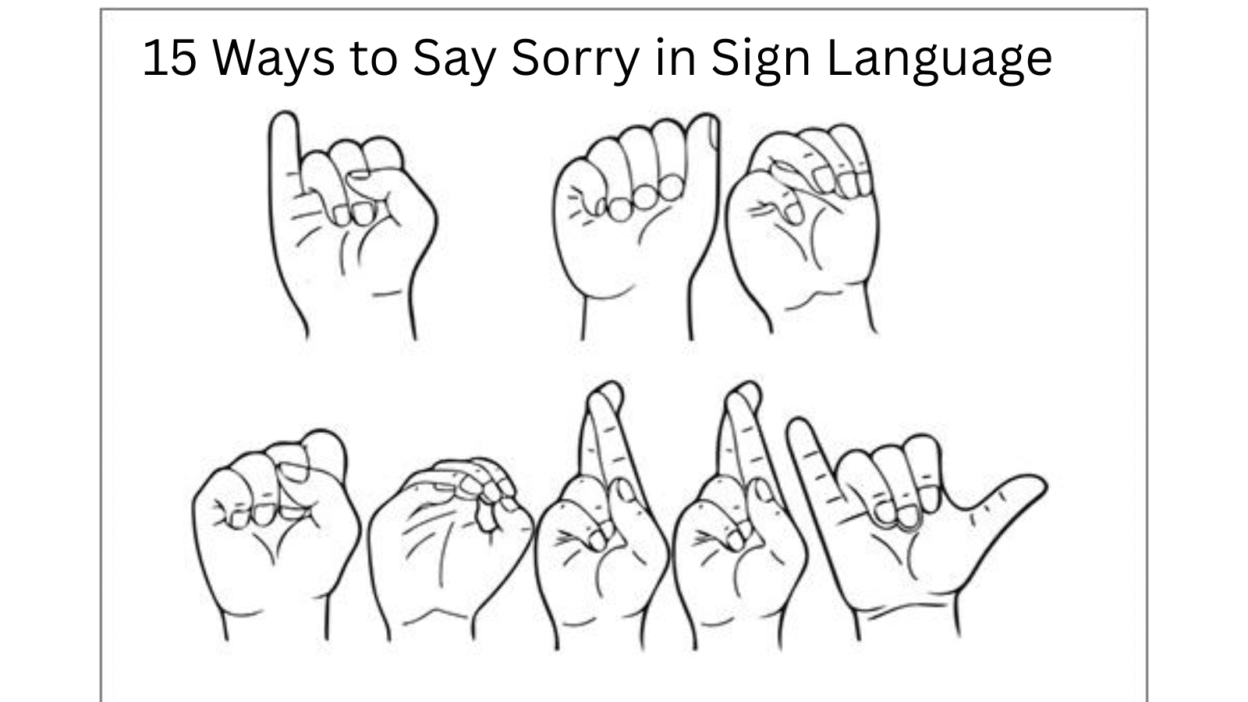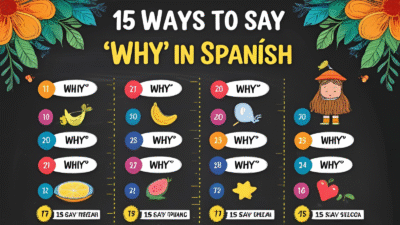15 Ways to Say Sorry in Sign Language 🤟 is a helpful guide for anyone who wants to express apologies in a respectful and inclusive way.
In American Sign Language (ASL) and other sign languages, there are different ways to convey sorry, depending on the situation, tone, and relationship with the person you’re addressing.
In this guide, we’ll explore 15 ways to say sorry in sign language, from simple everyday gestures to more heartfelt and formal expressions, so you can communicate your feelings clearly and sincerely.
Learning 15 ways to say sorry in sign language will help you connect better with Deaf and such as hard of hearing individuals. It allows you to express empathy and take responsibility in a culturally respectful way. By practicing 15 ways to say sorry in sign language, you’ll gain confidence in using the right sign for any situation.
Sorry in Sign Language:
Let’s explore 15 different signs and variations of saying sorry in American Sign Language (ASL) and a few from other sign languages — with dialogue, cultural context, and where these signs come from.
1. Sorry (The Standard ASL Sign)
How to Sign: Make a fist with your dominant hand and move it in a circular motion on your chest.
Example:
👤 User A: (Signs) Sorry, I didn’t mean to hurt you.
👤 User B: (Signs) It’s okay. Thanks for apologizing.
Origin:
This is the default ASL sign for “sorry.” It’s based on the heart, symbolizing sincere emotion.
2. I Apologize

How to Sign: Sign “I” (point to yourself), then “sorry.”
Example:
👤 User A: (Signs) I apologize for being late.
👤 User B: (Signs) No worries, it happens.
Context: Used for more formal apologies or in professional settings.
3. Forgive Me
How to Sign: Place one hand palm up; brush the fingers of your other hand across it (sign for “forgive”).
Example:
👤 User A: (Signs) Forgive me. I didn’t mean that.
👤 User B: (Signs) I do. Thank you for being honest.
Origin: The sign for “forgive” is metaphorical — like wiping the slate clean.
4. My Bad
How to Sign: Point to yourself, then mimic the ASL sign for “wrong” (touch chin with a “Y” handshape).
Example:
👤 User A: (Signs) My bad — I sent the wrong file.
👤 User B: (Signs) No problem, I got the right one now.
Usage: Informal — common among younger signers.
5. So Sorry (Intensified)

How to Sign: Repeat the “sorry” sign twice, with a sad expression.
Example:
👤 User A: (Signs) So sorry about your loss.
👤 User B: (Signs) Thank you. That means a lot.
Usage: Used for deeper apologies or sympathy.
6. Excuse Me
How to Sign: Curve one hand and brush it across the opposite palm.
Example:
👤 User A: (Signs) Excuse me, may I pass?
👤 User B: (Signs) Sure, go ahead.
Origin: Based on the gesture of clearing a path — polite but not emotional.
7. I Didn’t Mean To
How to Sign: Sign “I,” then “mean” (dominant index finger taps palm twice), followed by a head shake.
Example:
👤 User A: (Signs) I didn’t mean to offend you.
👤 User B: (Signs) I know. Thank you for saying that.
Context: Used to explain intent in conflicts.
8. Sympathy (Condolences)
How to Sign: Touch the heart area with a flat hand and move it outward.
Example:
👤 User A: (Signs) I offer my sympathy.
👤 User B: (Signs) Thank you, truly.
Use: Often used in times of grief or emotional support.
9. I Feel Bad

How to Sign: Sign “I,” then “feel,” followed by a sad facial expression.
Example:
👤 User A: (Signs) I feel bad about what I said.
👤 User B: (Signs) It’s okay. We all say things sometimes.
Use: Informal, emotional apologies.
10. Didn’t Mean To Offend
How to Sign: “I,” “mean,” “not,” then “offend” (fingers of both hands touch forward and away from body).
Example:
👤 User A: (Signs) I didn’t mean to offend you.
👤 User B: (Signs) Thanks for clarifying.
Use: Often used in cultural misunderstandings or sensitive contexts.
11. Oops / Sorry!
How to Sign: Tap chin quickly with an index finger while mouthing “oops.”
Example:
👤 User A: (Signs) Oops! That was your coffee, not mine.
👤 User B: (Signs) Haha, all good!
Use: Very casual — like a minor mistake.
12. Sorry (British Sign Language)
How to Sign (BSL): Closed fist rubbing in circles on the chest — similar to ASL.
Example:
👤 User A: (Signs in BSL) Sorry I missed your call.
👤 User B: (Signs) That’s okay, call me later.
Note: Very similar in BSL and ASL, but usage and context differ slightly.
13. Pardon Me
How to Sign: Sign “excuse” + gentle facial expression.
Example:
👤 User A: (Signs) Pardon me, I didn’t catch that.
👤 User B: (Signs) Let me repeat.
Use: Polite, used in formal or public settings.
14. I Regret That
How to Sign: “I,” then touch chin and move downward with emotion (showing sadness/regret).
Example:
👤 User A: (Signs) I regret how I handled that.
👤 User B: (Signs) It’s okay. Let’s move forward.
Use: Deeper emotional apologies.
15. Sorry (with Tears Gesture)
How to Sign: “Sorry” + mimic tears running down cheeks (index fingers).
Example:
👤 User A: (Signs) I’m truly sorry.
👤 User B: (Signs) I can see that. I forgive you.
Use: Emphasizes deep sorrow or emotional intensity.
Conclusion:
💡 Learning different ways to say sorry in sign language helps you express empathy, kindness, and understanding beyond words.
If you’re apologizing for a small mistake or expressing deep regret, these signs allow you to connect with people in a meaningful and respectful way. By practicing these 15 ways to say sorry in sign language, you not only improve your communication skills but also show that you care about inclusivity and cultural respect.



